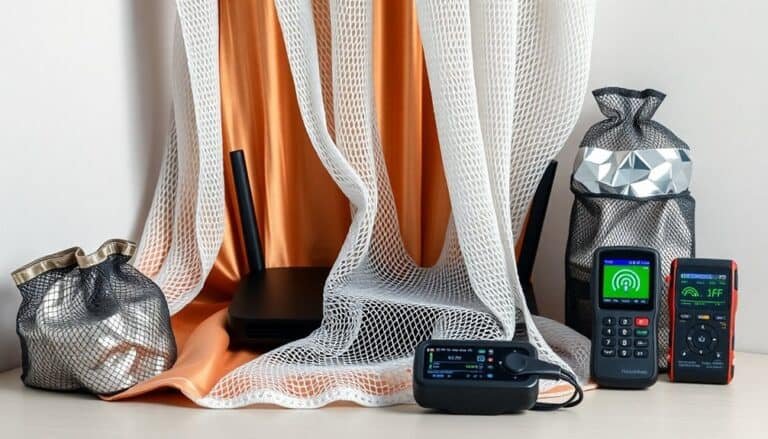How to Safely Use a Smartwatch (EMF Minimization)
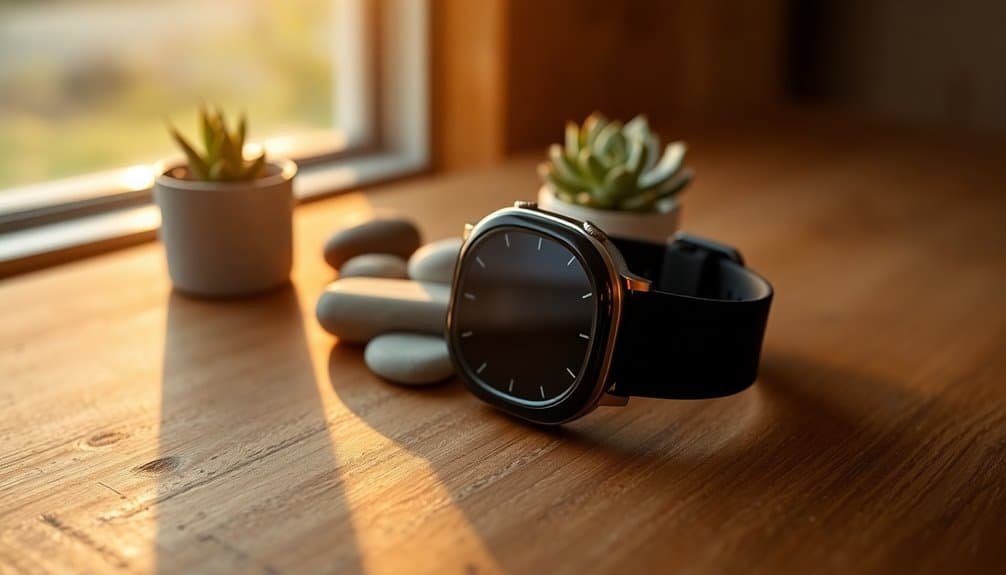
To minimize EMF exposure from a smartwatch, activate airplane mode when it’s not in use and limit Bluetooth and Wi-Fi functions. Choose reputable brands, keep the device at a distance when unworn, and ensure firmware is updated for security.
Monitor app permissions closely, enabling only essential ones, and ensure the watch fits well to avoid circulation issues. By following these guidelines, you can enjoy your smartwatch while effectively managing EMF risks.
Disclaimer: As an affiliate, I may collect a share of sales from the links on this page.
Understanding EMF Emissions From Smartwatches
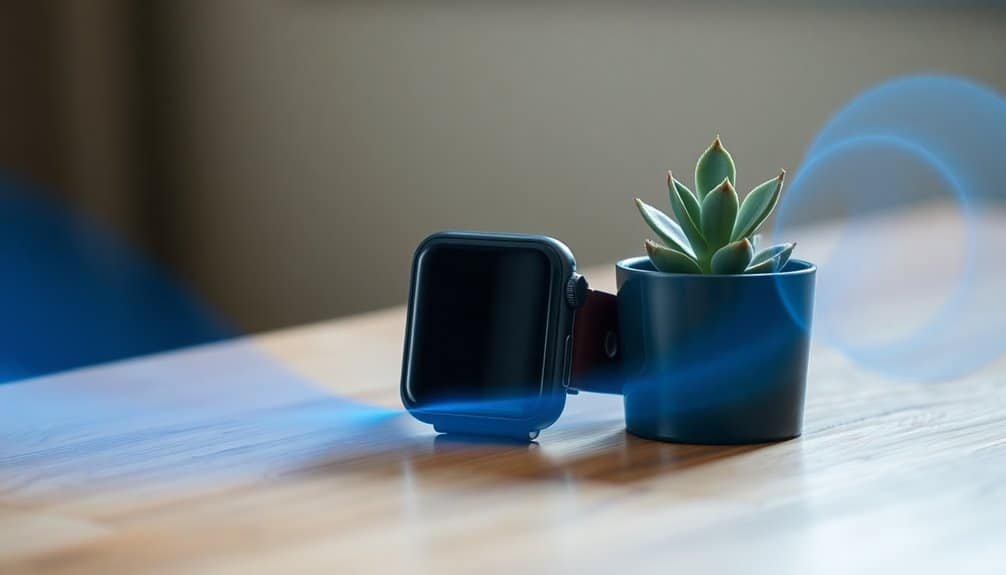
When you wear a smartwatch, you’re surrounded by electromagnetic fields (EMF) created by the device. EMF consists of areas of energy, often measured in microWatts per square meter (µW/m²). Typically, safe exposure levels range from 0.1 to 10 µW/m². Compared to smartphones, smartwatches emit considerably less EMF, akin to emissions from laptops and Wi-Fi routers. They utilize Bluetooth and wireless technologies, contributing to overall EMF levels. Wearable devices must comply with FCC limits for human exposure to RF radiation to be sold in the U.S., further assuring safety to users. Additionally, the SAR (Specific Absorption Rate) measures radiation absorption by the body from devices, helping to establish safety benchmarks. Manufacturers guarantee compliance with international safety standards, performing rigorous testing to maintain low and safe EMF emissions. However, cumulative exposure from various devices remains a concern for potential health impacts.
Strategies to Minimize EMF Exposure
To minimize EMF exposure from your smartwatch, it’s crucial to adopt specific strategies that can help manage your interaction with the device.
First, use airplane mode when your watch isn’t in use, greatly reducing emissions. Additionally, limited history of EMF exposure and its potential risks emphasize the importance of caution with wearable devices.
Consider incorporating EMF harmonizing devices, like the Smartwatch Chip, which neutralizes radiation.
Maintain distance by keeping the smartwatch away when not worn.
Limit usage duration and turn off unnecessary features, such as Bluetooth or Wi-Fi.
Regularly check your settings and keep your firmware updated, ensuring peak EMF management.
Awareness of surrounding EMF sources also aids in your overall exposure reduction strategy. Additionally, being mindful of common sources of RFs can enhance your efforts to reduce EMF exposure effectively.
Health and Safety Guidelines for Smartwatch Use
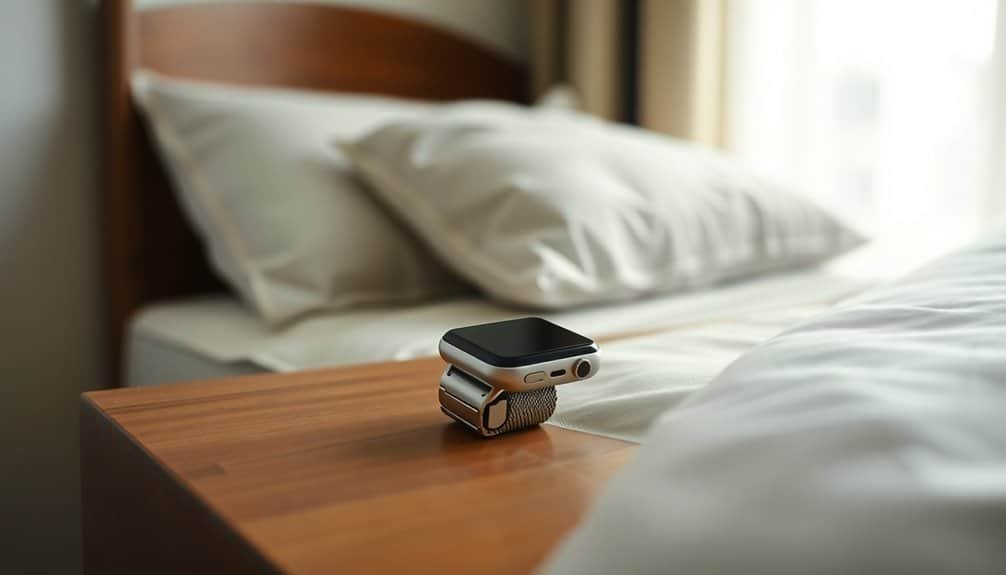
Understanding health and safety guidelines is essential for anyone using a smartwatch. Regulatory bodies, like the FDA, guarantee these devices meet safety standards for health monitoring. Devices approved for medical use must detect significant health events, while unauthorized devices can pose risks from inaccurate measurements. Smartwatches can expose users to radiofrequency (RF) radiation, regulated by the FCC; following manufacturer recommendations is imperative. Additionally, many smartwatches utilize photoplethysmography technology to monitor heart rate, enhancing their capabilities for health tracking. Users should also be aware of possible EMF radiation exposure and its potential side effects. User data needs protection; implementing two-factor authentication and regular software updates enhances security. Finally, remember that smartwatches shouldn’t replace medical advice, and maintaining awareness of physical risks, like skin irritation, is critical for safe usage.
Responsible Usage Practices for Smartwatches
While smartwatches offer numerous benefits, you must adopt responsible usage practices to maximize their advantages and secure safety.
Select reputable brands and verify firmware updates; strong passwords and two-factor authentication enhance security. Limit app permissions to reduce data exposure, and disable unnecessary tracking features.
For physical safety, adjust the fit to avoid circulation issues and take breaks for skin health. Use airplane mode when not needed, especially during sleep.
Monitor for unusual device behavior, and avoid unofficial apps. Regularly check for software updates and adjust privacy settings to maintain control over your activity and health data.
Future Directions in EMF Research and Technology
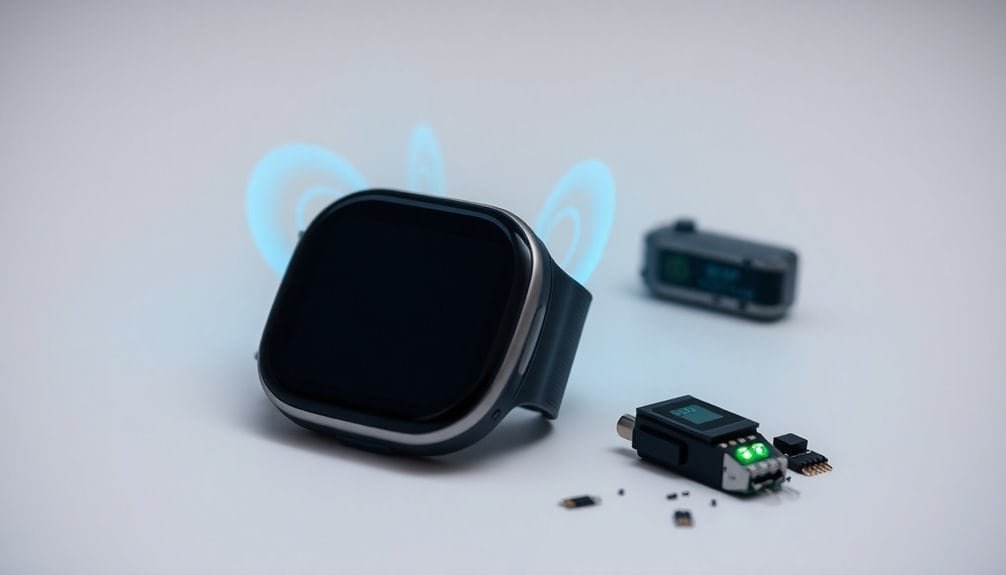
As researchers dive deeper into the effects of electromagnetic fields (EMF) from wearable devices, new insights are rapidly emerging.
Future studies will emphasize long-term exposure effects, vital for understanding health implications. Concurrently, development efforts focus on technologies that minimize EMF emissions without compromising functionality.
Public awareness initiatives aim to educate you about safe usage practices, while regulatory updates guarantee compliance with evolving safety standards.
Collaborative international research attempts to enhance resources for EMF investigation.
Simultaneously, advanced sensor technologies, like chip-scale atomic clocks and smart fabric sensors, are evolving to support user needs while prioritizing EMF safety and functionality.
Frequently Asked Questions
Can Children Safely Wear Smartwatches Without Increased EMF Exposure Risks?
You can safely let children wear smartwatches, but it’s wise to monitor usage time and discourage prolonged contact. Encourage taking breaks and maintaining distance from the device to minimize any potential EMF exposure.
Are There Specific Smartwatch Models With Lower EMF Emissions Available?
Yes, you’ve got options. The Oura Ring, certain Garmin models, and non-Bluetooth trackers like HUAKUA can minimize EMF emissions. Choose these devices for a safer wearable experience that meets your needs without excessive radiation exposure.
How Do Environmental Factors Affect Smartwatch EMF Emissions?
Environmental factors like proximity to your body, network connectivity, and surrounding technology greatly affect smartwatch EMF emissions. Urban areas often expose you to higher levels due to increased wireless infrastructure, amplifying your overall EMF exposure.
Do Smartwatches With Cellular Capabilities Emit More EMF Than Those Without?
Imagine a beacon cutting through the night. Smartwatches with cellular capabilities emit more EMF than their non-cellular counterparts. The powerful signals create a digital glow, making your connection stronger but increasing potential exposure.
Can Using a Smartwatch During Pregnancy Pose Any Health Risks?
Using a smartwatch during pregnancy might pose health risks, as some studies suggest EMF exposure could affect fetal development. Staying informed and discussing usage with your healthcare provider can help mitigate potential concerns.
Conclusion
Understanding EMF emissions from smartwatches is key for informed use. By limiting connectivity and wearing the device loosely, you can minimize exposure and potential risks. Adhering to health and safety guidelines ensures responsible usage. Staying informed as technology evolves empowers you to balance utility and safety. A smarter approach today leads to a healthier tomorrow.

